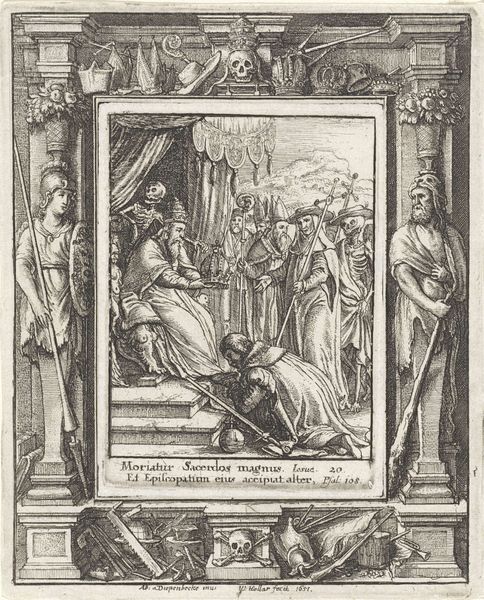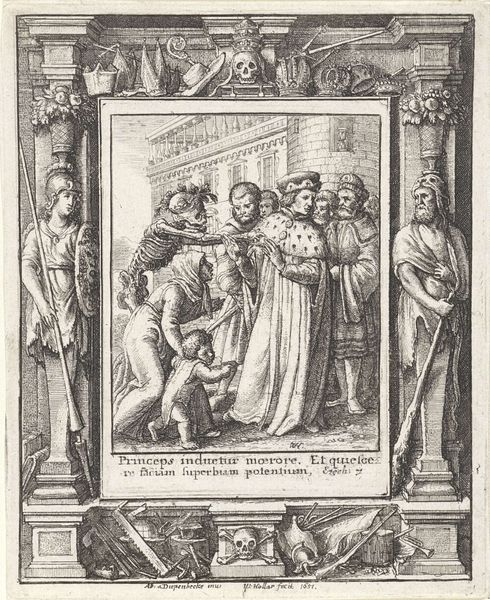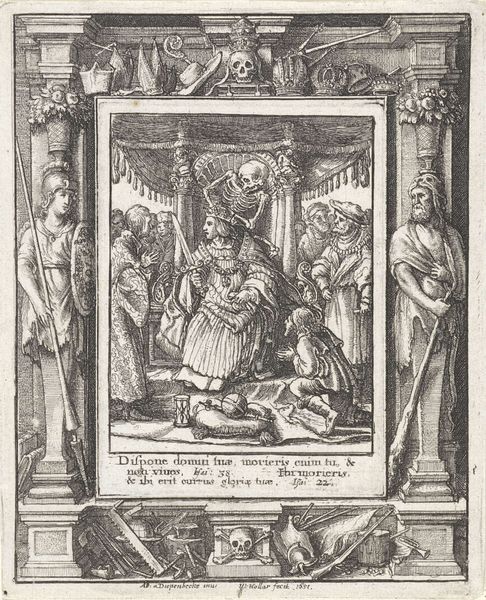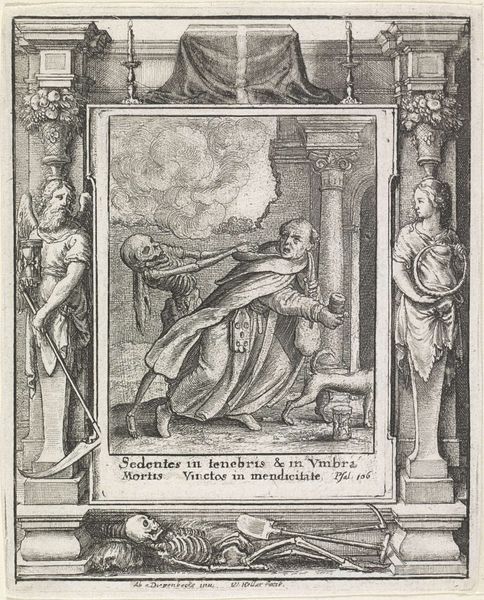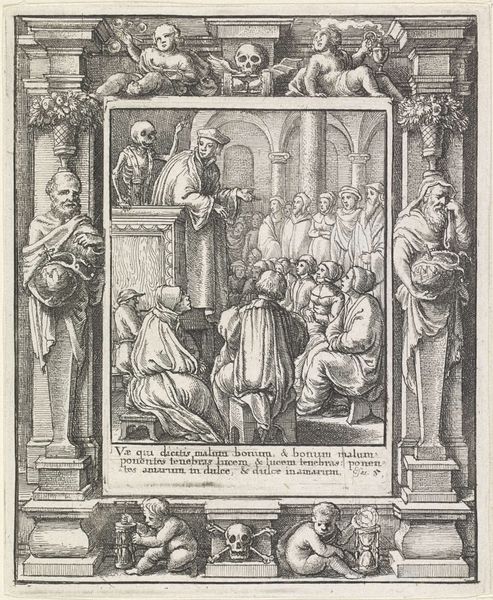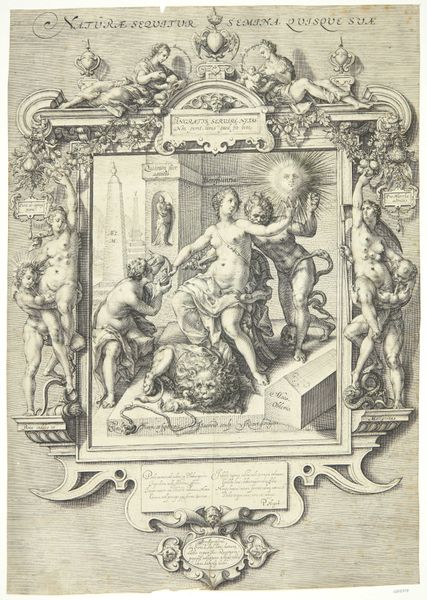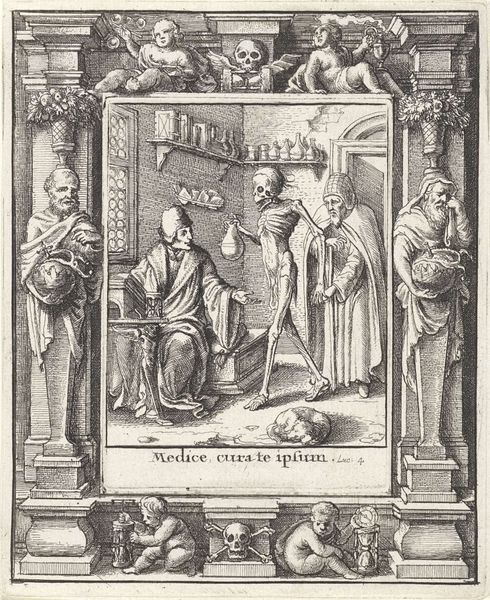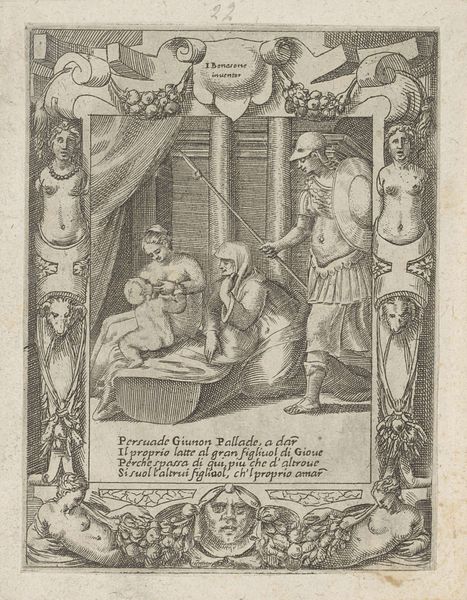
Dimensions: height 115 mm, width 95 mm, height 77 mm, width 55 mm
Copyright: Rijks Museum: Open Domain
This print, "The Queen and Death," was made by Wenceslaus Hollar, using the etching technique. This intaglio process involves drawing into a wax-coated metal plate with a sharp needle, then submerging the plate in acid, which bites away the exposed lines. Ink is then applied to the plate and the surface wiped clean, leaving ink only in the etched lines. Finally, paper is pressed against the plate to produce the print. Hollar was a master of this method. Note the fine, precise lines that create the composition, the way he renders shadow and volume, especially in the folds of fabric and the figure of death. The print rewards close inspection, from the implements of destruction at the bottom to the queen’s alarmed expression. But it’s not just a virtuoso display of skill. Consider the historical context: Hollar worked in a world defined by the rise of print culture, which made images widely accessible. "The Queen and Death" is a "memento mori," a reminder of our mortality. This image of impending death would have been a stark reminder to its viewers of the time. Ultimately, Hollar demonstrates the power of printmaking as a medium for social commentary, not merely technical display.
Comments
No comments
Be the first to comment and join the conversation on the ultimate creative platform.
